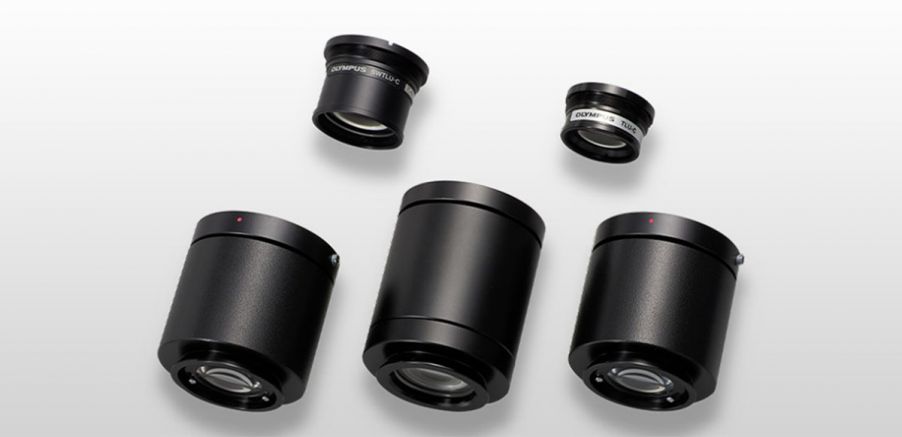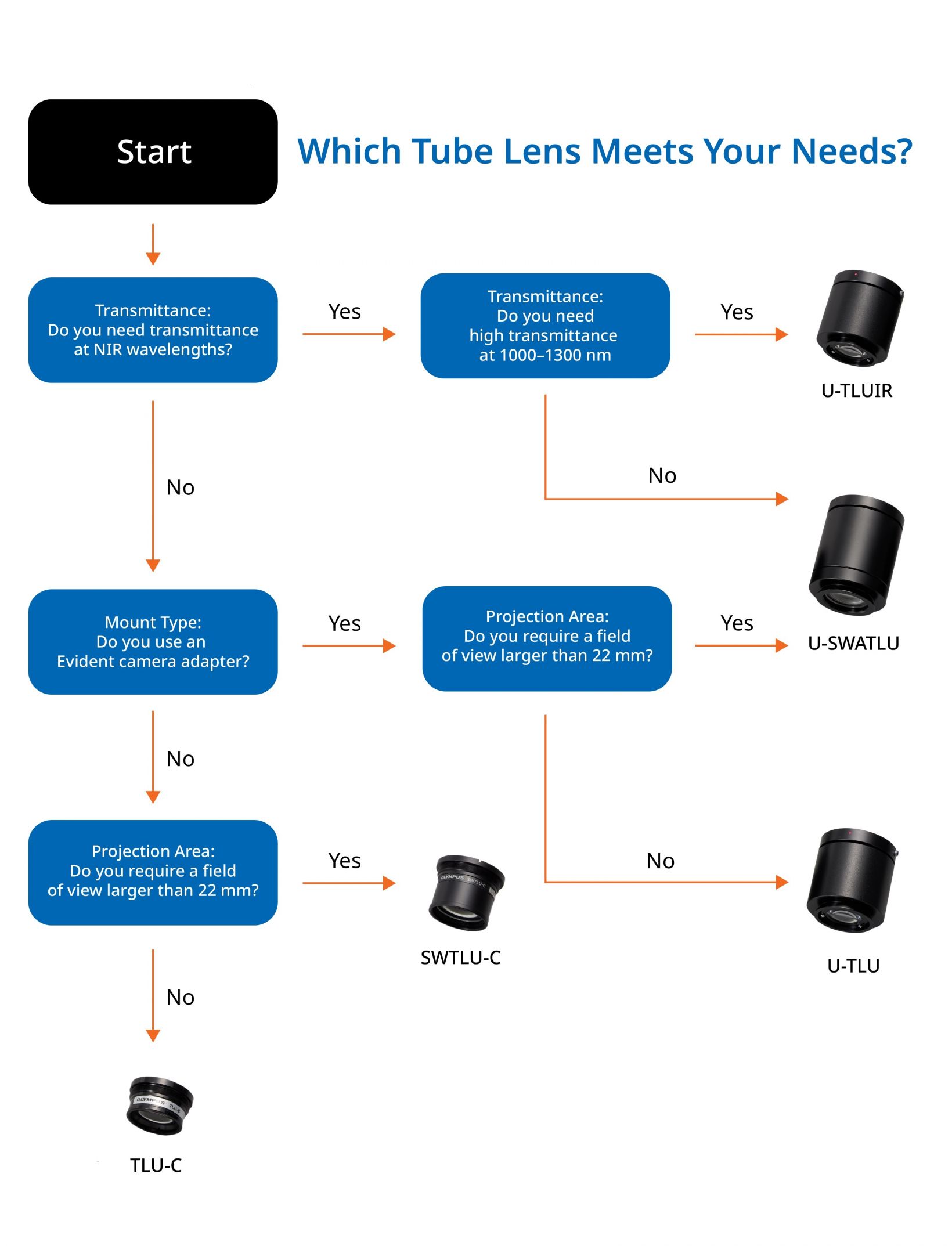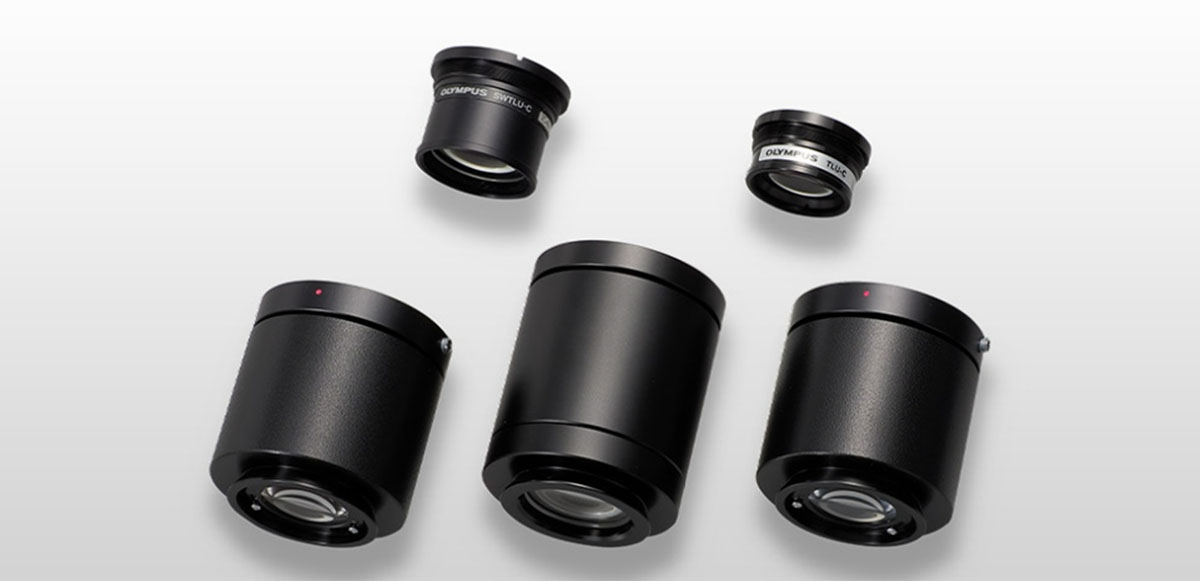Do you find it challenging to select the right tube lens to combine with the objective lens you want to image with? The overall image quality and aberration level depends on the objective and tube lens combination, so the tube lens choice becomes a critical component affecting the optimal system’s performance.
Evident offers five tube lenses with varying field numbers and mounting interfaces. Here are three easy steps to determine the best tube lens for your application.
1. Based on your application, consider these key tube lens parameters:
There are a few key tube lens parameters that will help you determine which is the best lens for your application. Step 1 involves considering each of these parameters and taking note of your responses before moving onto step 2:
a) Transmittance
Are you working with visible wavelength (400 nm–1000 nm), or does your application require high transmittance in the near infrared (NIR)? Tube lenses in the visible range are more widely available than those corrected for higher wavelengths. However, Evident offers tube lenses that meet most transmittance needs across the visible and NIR wavelengths. For an example of an NIR application, read this blog post: Acquiring High-Quality Images Through Silicon Without Damaging the Finished Product.
b) Mounting Interface
Are you using an Evident camera adapter?
Our camera adapters have c-mount threads on the top surface, and the bottom has a dovetail shape. This dovetail makes mating the c-mount to a dovetail tube lens as simple as securing the clamping screw. The image will be realigned when using this combination.
When you aren’t using a camera adapter or have a third-party camera adapter, consider choosing a tube lens with threads. Tube lenses with mounting threads are usually smaller in size, so they’re often the best choice for configurations that minimize the overall size of the optical system.
c) Field Number/Projection Area
The field number (FN) is the diameter (in millimeters) of the image’s circular projection area on the sensor plane. Consider the size you need to project onto your sensor. The field number of the tube lens needs to be larger than the projection area to minimize vignetting and off-axis aberrations.
Field numbers 22 mm and 26.5 mm are common and correspond to the field numbers of standard objectives. Keep in mind that a 26.5 mm tube lens will produce vignetting if combined with an objective with a 22 mm field number.
d) Dimensions and Weight of the Tube Lens
For some optical designers, space is a major consideration and smaller tube lenses help minimize the overall size of the optical path. In other system designs, space is not an issue and other specifications can be prioritized. In either scenario, check the dimensions and weight of the tube lens to ensure it is compatible with your overall design.
2. Using our flow chart, find the best tube lens:
Next, use the tube lens selection flow described below to identify the right tube lens for you.
Need to Select a Camera Adapter?
We provide camera adapters with different projection magnifications. Select the field of view that you need based on the sensor size of your camera.

C-mount camera adapters that can be attached to our tube lenses.
If you need guidance to select the ideal microscope camera, check out our blog post 4 Free Tools to Help You Choose the Right Microscope Camera.
3. Verify the detailed specifications of the tube lens.
Finally, check the other specifications of the tube lens you chose to validate that it meets all your needs. Detailed specifications for Evident tube lenses, including dimensions and weight, can be found here on our website.
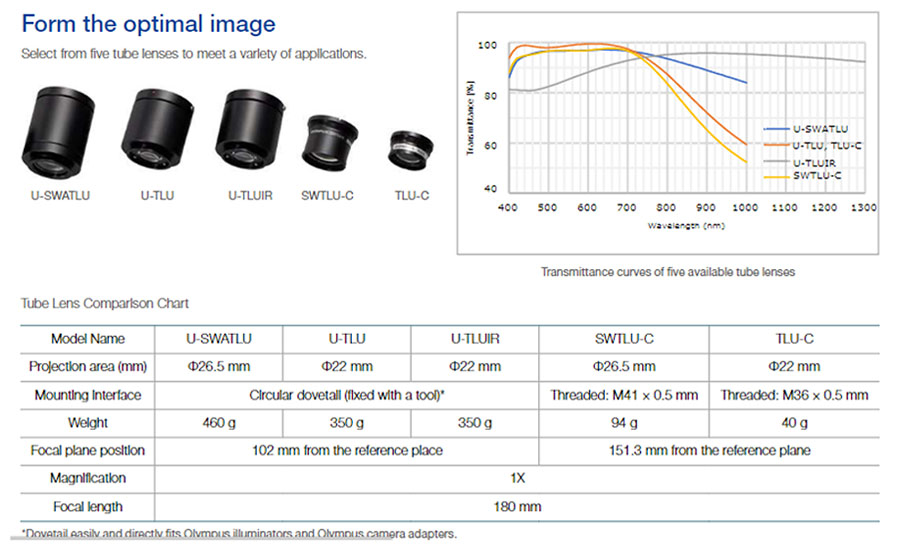
Detailed specifications of tube lenses
Please refer to the following figure to compare the overall size between sample and sensor position for Evident tube lenses.
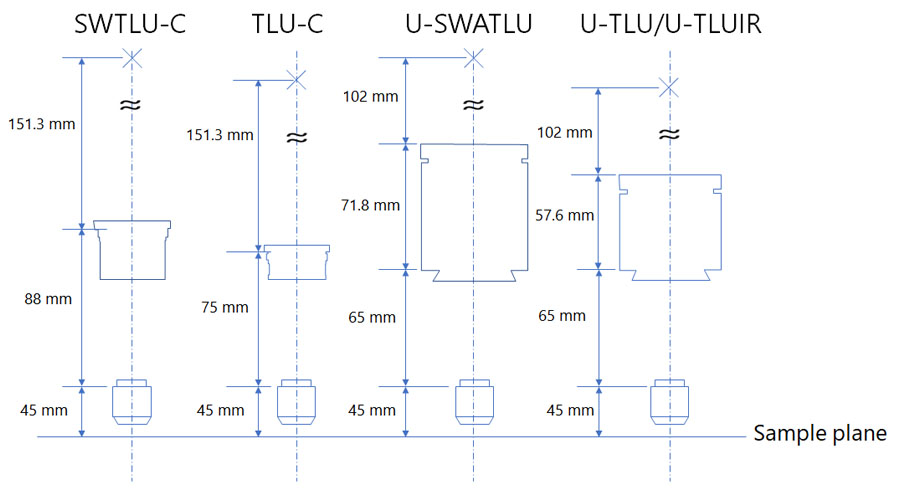
Total dimension of the optical system from sample to sensor
For easy integration, you can download 3D CAD files from the Resource section of our website.
Contact Us for Support
If the specifications available online are insufficient, or if you can’t find the information you are looking for, please contact us. In many cases, we can provide modulation transfer function (MTF) data for tube lenses, which will give you more details on optical performance.*
*Note: Evident discloses MTF data under the condition of a nondisclosure agreement (NDA). This data can be used to build an optical system with higher optical performance.
Related Content
How to Use the Olympus Objective Finder in 5 Easy Steps
How to Minimize an Optical System for a Compact Imaging Device
